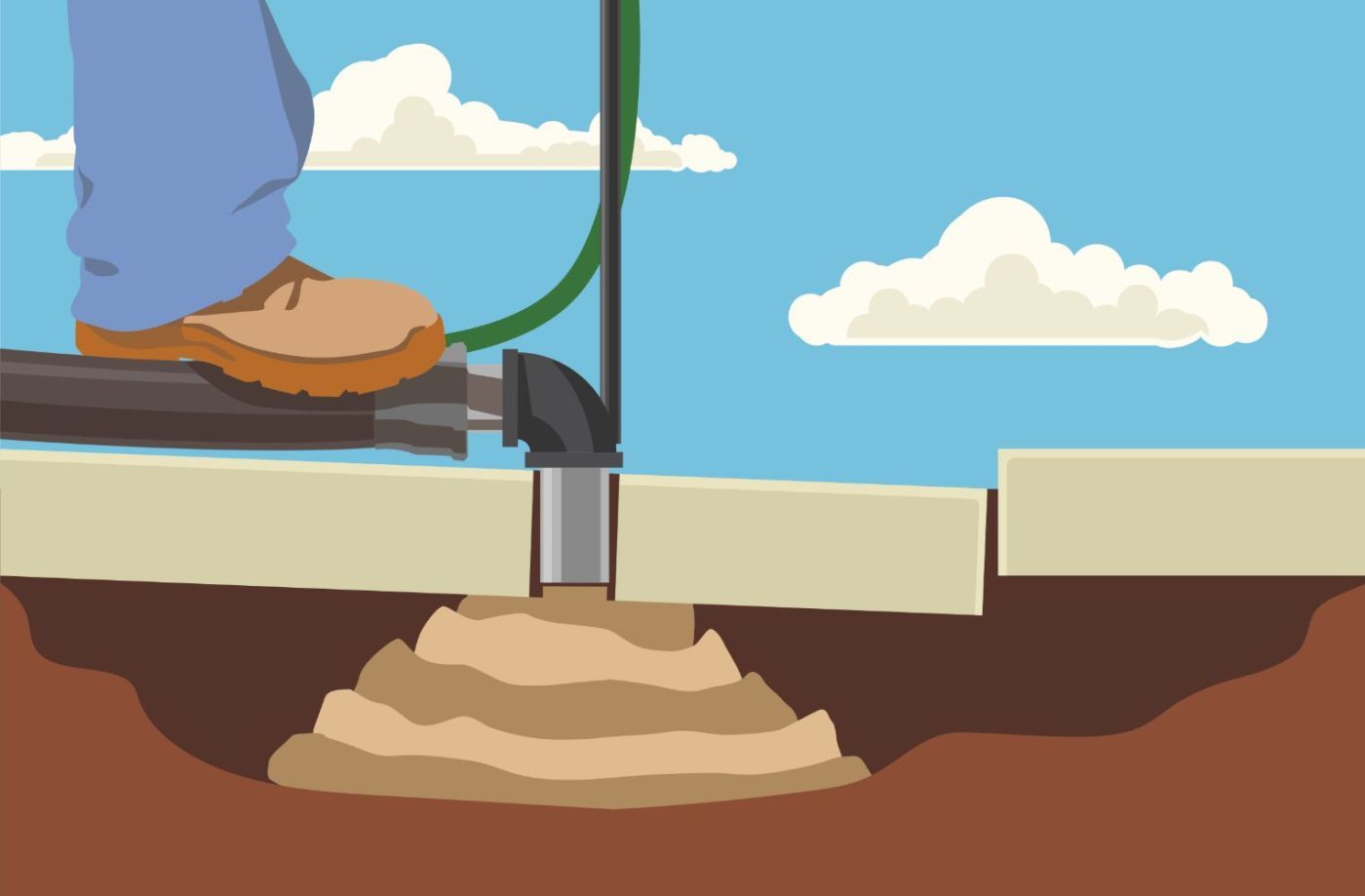Mudjacking Problems: 3 Things To Consider Before Mudjacking Your Concrete
October 26th, 2023 | 3 min. read
By Sarah Etler

Learn how the high speed and pressure used in mudjacking can lead to problems with your concrete repair.
Mudjacking can be a long-lasting and cost-effective way to lift settled concrete, but it does come with some potential problems that are worth considering before deciding on this concrete repair method.
A-1 Concrete Leveling has been lifting settled concrete for 30+ years with stone slurry grout and foam. While we don’t do mudjacking ourselves, we’ve seen firsthand how these problems can impact the final result.
To help you decide on the right concrete leveling method for your settled slabs, we’ve put together this article to explain these problems and how they might affect the overall repair.
Mudjacking Problems vs. Myths
Before jumping into the main problems with mudjacking, it’s important to point out that there are many myths and misconceptions about this concrete leveling method.
Many of these misconceptions are simple misunderstandings, but others come from foam-only concrete leveling companies aiming to scare customers away from mudjacking.
In this article, we’re focusing on the actual problems with mudjacking – not the myths. But you can read about the common myths and misconceptions here: 5 Common Mudjacking Myths Busted
3 Problems With Mudjacking
When lifting concrete with mudjacking, there are three main problems that can impact the final result and/or longevity of the repair.
All of these problems have to do with the high speed and pressure used to pump the mudjacking mixture under the concrete. You can learn more about the process here: How Concrete Leveling Works
1. Voids Left Under Concrete
Because the mudjacking process pumps the lifting material under the concrete at a high speed and pressure, it can be difficult to completely fill all of the voids under the slab.
Instead of completely filling the empty space, the mudjacking mixture can pile in on top of itself, essentially creating “pyramids” of material where it was pumped in.
These pillars, or “pyramids,” leave the lifted concrete unsupported. This can cause the slab to crack when weight is applied to these unsupported sections, and allow easy access for water to flow under the slab and erode away the material holding it up.

2. Less Control Over the Lift
The higher pressure and pumping speed can make it difficult to accurately control how much or how little the settled slab raises.
This can lead to lifting the wrong areas or overlifting the concrete. And once the concrete is lifted, there is no way to lower it back down again.
3. Larger Drill Holes
To accommodate the high pumping pressure and speed, the drill holes used to pump the material underneath the concrete need to be larger than in other concrete leveling methods.
For reference, mudjacking holes are typically 1.5-2.5” in diameter while foam drill holes and stone slurry grout leveling drill holes are around ⅝ inches and 1 inch in diameter respectively.
The larger drill holes do not normally affect the strength of the concrete or pose a higher risk of cracking, but they can be harder to blend into the concrete and more noticeable when the repair is complete.
Is Mudjacking a Good Idea?
Mudjacking can be a good option to consider for lifting settled concrete. You should keep the problems mentioned above in mind and discuss them with your concrete leveling estimator, but if done correctly, mudjacking repairs can last the life of the concrete itself.
But also keep in mind that mudjacking is just one option. Stone slurry grout leveling and polyjacking (foam concrete leveling) are additional methods to consider. Just like mudjacking, they each come with their own pros and cons that make them ideal for certain situations.
Learn more about each concrete leveling method with these resources:
- All About Mudjacking
- Is Mudjacking Worth It? The Pros and Cons of Mudjacking
- All About Stone Slurry Grout Concrete Leveling
- The Pros and Cons of Stone Slurry Grout Concrete Leveling
- All About Foam Concrete Leveling (Polyjacking)
- The Pros and Cons of Polyjacking
Your Next Steps
After learning more about the potential problems with mudjacking, you’re one step closer to deciding if it’s a service you’d like to consider for your uneven slabs.
Here at A-1 Concrete Leveling, we don’t provide mudjacking services, but we know it can be a good option to lift settled concrete. Instead, we offer stone slurry grout leveling in all of our nationwide locations, and polyjacking in some.
If you’re interested in seeing how stone slurry grout leveling or foam leveling can help restore your settled concrete, click the link below to request a free onsite cost estimate with an A-1 expert near you!
Click Here to Find Your Nearest Location and Receive a FREE Estimate
Sarah Etler joined A-1 Concrete Leveling after receiving her Bachelor of Arts degree in English from Northern Kentucky University. As A-1's Content Marketing Manager, she works closely with industry experts to produce content that will best answer questions related to concrete repair and maintenance practices. Sarah loves living a life full of discovery and is excited every day to see what new things she can learn and share with those around her.
Topics: